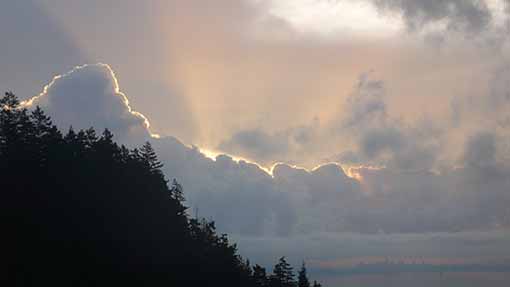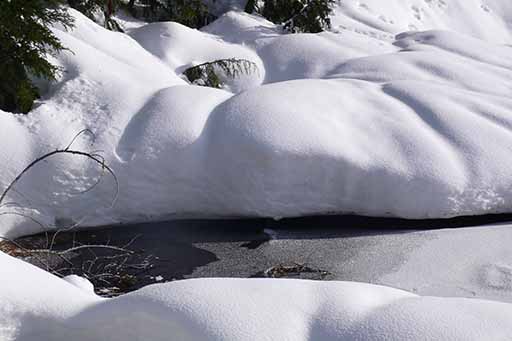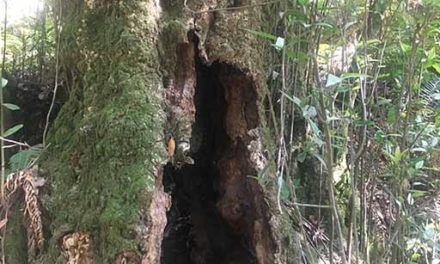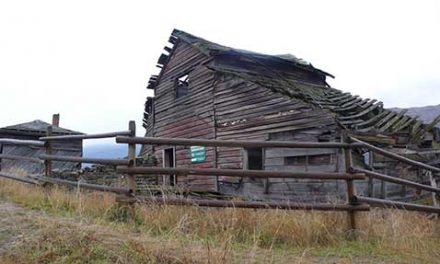Something to keep in mind…
9-Year-Old Zayene Cowie
…
He is very upset
…
about the lack of action
..

~
WE HAVE ARRIVED
~
The carbon dioxide level just surpassed 413 parts per million (up from 300 ppm since 1880) and the global temperature has risen 1.9F.
The following four-part series by Paul Beckwith has the best overall explanation of Climate Breakdown to date. It includes his recommendations for future remediation. His explanations are clear and easy to understand for the lay person.
Some highlights from the videos:
• Climate restoration is necessary and the following trends need to be halted and reversed:
– the rise in the mean global temperature
– the more rapid rise in Arctic temperatures
– the retreat of Arctic sea ice
• We need to remove a trillion tons of carbon to get CO2 levels back down to 300ppm by 2050 (not including additional emissions).
• The earth has natural climate-control mechanisms which have been in play throughout the history of the Earth. These mechanisms include the carbon cycles, the nutrient cycles and hydrological cycles.
• The AMOC (Atlantic meridional overturning current) relies on arctic sea ice for its propulsion and has had a key role in past abrupt climate change.
• Earth’s climate mechanisms have been driven by Milankovitch cycles.
• At the end of the Younger Dryas period, Arctic temperatures rose by 10C over a few decades and the central Arctic ocean became free of sea ice. It remained so for several thousand years during the peak Milankovitch cycle.
• Over the last few thousand years there has been climate stability allowing for the development of civilization.
• The most startling repercussion of global warming has been the accelerated warming and melting of the Arctic driven by the albedo positive feedback.
• A rapidly-warming Arctic reduces the temperature gradient between the Arctic and the tropics. This destabilizes the jet stream, causing it to meander more to the north and south and to ‘get stuck’ in blocking patterns. This has led to a noticeable increase in the frequency, severity, and duration of severe weather events. This happens more in the northern mid-latitudes.
• The Arctic temperature amplification has disrupted circulation patterns in the oceans and the atmosphere.
• The heat from the Pacific and the Atlantic Oceans is being exported to the Arctic ocean adding to the albedo effect. The Arctic ocean will eventually become free of sea ice.
• The familiar atmospheric three-cell circulation system will change as the temperatures equalize between the Arctic and the equator, ultimately resulting in only one Hadley cell as the temperature gradient between the Arctic and the Equator is lost.
• A rise in global temperature is not as critical as the rise in Arctic temperatures.
• The AMOC is the loose cannon and could either heat or cool the Arctic.
[VIDEO] Paul Beckwith part 1
[VIDEO] Paul Beckwith part 2
[VIDEO] Paul Beckwith part 3
[VIDEO] Paul Beckwith part 4

HOT AIR NEWS ROUNDUP
Over 1.5 Million Students Go On March 15 Climate Strike
Over 1,5 million students on school strike 15/3. We proved that it does matter what you do and that no one is too small to make a difference.
Here is my response to the people who wants us to go back to school:https://t.co/ob42pYVDsl#FridayForFuture #SchoolStrike4Climate pic.twitter.com/EgzvJj8KvL
— Greta Thunberg (@GretaThunberg)
The Future of Climate Authoritarianism Is Now
Truthdig 3-20-19
It was the kind of headline one might encounter in the science fiction of Ursula K. Le Guin or Kim Stanley Robinson. Last month, citing a new study from the British science journal Nature, Quanta Magazine’s Natalie Wolchover explored the possibility of human-caused global warming forging a world without stratocumulus clouds by the end of the century. This would raise the temperature of the planet an additional 8 degrees Celsius (14.4 F)—double the increase for which we’re currently on pace. … “To imagine 12 degrees of warming,” Wolchover notes, “think of crocodiles swimming in the Arctic and of the scorched, mostly lifeless equatorial regions during [prehistoric times].”
French state faces landmark lawsuit over climate inaction
France 24 3-14-19
When French President Emmanuel Macron showed up for a town hall meeting last week in the picturesque provençal town of Gréoux-les-Bains, part of a Great National Debate that has seen him engage with local communities across the country, the star guest from Paris was upstaged by a local schoolboy who, mic in hand, urged him to get serious about saving the planet.
Tropical Cyclone Idai’s Death Toll in Mozambique May Exceed 1,000
Weather Underground 3-18-19
As Idai approached the coast, the stronger left eyewall of the storm moved over Beira (population 530,000) near the time of high tide, driving a large storm surge into the city. Beira is Mozambique’s fourth largest city, and second largest port. The city is very low-lying, with portions lying below sea level. The city has no power, no communications, and flooded access roads, though the airport has some limited accessibility.
Climate change is lifting Iceland – and it could mean more volcanic eruptions
The Guardian 1-30-19
Iceland is rising because of climate change, with land freed by the melting of the ice caps rebounding from the Earth at a rate of up to 1.4in per year.
The downside? Researchers believe the extra uplift could be behind an increase in volcanic activity, with three Icelandic eruptions in the last five years shutting down flights and spewing ash in the air.
The Age of Stupid revisited: what’s changed on climate change?
The Guardian 3-15-19
[VIDEO] The Age of Stupid
OIL
‘Triumph for Our Climate’: Judge Blocks Fracking on 300,000 Acres of Public Land
Common Dreams 3-20-19
“To limit greenhouse gas emissions, we have to start keeping our fossil fuels in the ground and putting an end to selling public lands for fracking,” added Nichols. “This decision is a critical step toward making that happen.” … U.S. District Court Judge Rudolph Contreras’ “landmark” decision was focused on the Trump administration’s land sales in Wyoming, but environmentalists said the ruling could have national implications.
What Norway’s Big Divestment Decision Means for Fracking, Tar Sands and Global Oil Exploration
Desmog 3-18-19
Norway’s sovereign wealth fund, known as the Government Pension Fund Global (GPFG), primarily exists due to Norwegian oil production. And the fund will continue to be a major investor in companies like Exxon. … It appears it’s just cutting its losses on money-losing endeavors like fracking in America, tar sands oil production in Canada, and frontier exploration by UK companies in Africa and South-East Asia.
U.S. Oil Production Is Headed For A Quick Decline
Oil Price 3-11-19
production at the end of 2020 may have actually decreased from December’s 11.9 million barrels per day level to between 11.3 and 11.5 million barrels per day. This lower figure represents the production level that should be expected given the financial activity of the independent firms behind the shale output surge. … The coming decline will occur mostly in the areas that have produced the most growth over the last five years
Norway plans to expand Arctic oil exploration areas amid falling production
RT 3-15-19
Norway plans to include a total of 90 new blocks in the so-called APA annual licensing round this year, including 48 blocks in the Barents Sea, 37 blocks in the Norwegian Sea, and five blocks in the North Sea, Freiberg said. … Norway’s oil production is expected to drop this year to its lowest level since 1988, but to recover afterwards thanks to two large developments.
This is why they want more pipelines…
Despite Risks, Canada’s Tar Sands Industry Is Betting Big on Oil Trains
Desmog 3-14-19
Last year, Canada exported a record amount of tar sands oil to the U.S., despite low oil prices leading to major losses once again for the struggling tar sands industry. That achievement required a big bump in hauling oil by rail, with those daily volumes in late 2018 more than double the previous record in 2014 during the first oil-by-rail boom. … Canada’s oil industry essentially has reached its limit for exporting oil into the U.S. through pipelines.

ADAPTION AND RESILIENCE
Capturing bacteria that eat and breathe electricity
Washington Stuate University 3-5-19
After 32 days, the team returned to the hot springs to collect the submerged electrodes. Working under the supervision of Haluk Beyenal, Paul Hohenschuh Distinguished Professor in the Gene and Linda Voiland School of Chemical Engineering and Bioengineering, Mohamed and postdoctoral researcher Phuc Ha analyzed the electrodes. … Voila! They had succeeded in capturing their prey — heat‑loving bacteria that “breathe” electricity through the solid carbon surface of the electrodes.
In praise of the dumb home: A Passivhaus 25 years later
Treehugger 3-11-19
With the investigation of this prototype building, combining both typical masonry and lightweight structures, after a 25-year period of normal use, it has been confirmed that the solutions based on the passive house concept offer a path to sustainable construction with a good life cycle balance: The energy consumption is negligible, stable over time, and, in addition, the durability of the components and the building is prolonged, including excellent indoor air quality and comfort.
Scientists study fish to learn how to adapt to the impacts of climate change
Science Daily 3-19-19
Freshwater biodiversity is rapidly declining worldwide, and nature-based solutions which increase the resilience of ecological communities are becoming increasingly important in helping communities prepare for the unavoidable effects of climate change.

WILDLIFE & THE ENVIRONMENT
‘Almost certain extinction’: 1,200 species under severe threat across world
The Guardian 3-15-19
Scientists … have mapped threats faced by 5,457 species of birds, mammals and amphibians to determine which parts of a species’ habitat range are most affected by known drivers of biodiversity loss. … Two major threats they had not mapped were diseases affecting amphibians and climate change, which threatens all species.
Scientists Fix the Process of Photosynthesis
The Green Optimist 3-16-19
The process is called photorespiration and it cuts the efficiency of photosynthesis by half. … This has not been much of a problem when many thousands of years ago the atmosphere had more carbon dioxide than oxygen. However, when oxygen became dominant, very few plants were able to evolve. As a result, the majority of the plants are not developing to their full potential. Instead, they put extra energy in cleaning up the toxic compounds. These include all our crops, fruit trees and vegetables, as well as many of the trees in our forests.
Brazil to Open Indigenous Reserves to Mining Without Indigenous Consent
Common Dreams 3-14-19
For many years, international and Brazilian mining companies have dreamed of getting access to the mineral wealth lying beneath indigenous lands. Finally, the government of Jair Bolsonaro seems determined to give them that opportunity.
This affects much more than just caribou…
B.C. approves 314 new cutblocks in endangered caribou habitat over last five months
The Narwhal 3-14-18
The new cutblocks cover almost 16,000 hectares in total, an area almost eight times the size of the city of Victoria. … The Wilderness Committee discovered a sharp spike in logging approvals in the critical habitat of B.C.’s eight most imperilled caribou herds, where last October the group documented an additional 83 new cutblocks covering an area the equivalent of 11 Stanley Parks in size.
This artlicle references lot of studies…
The 12 Signs That Show We’re in The Middle of a 6th Mass Extinction
Science Allert 3-18-19
The trend is hitting global fauna on multiple fronts, as hotter oceans, deforestation, and climate change drive animal populations to extinction in unprecedented numbers. … A 2017 study found that animal species around the world are experiencing a “biological annihilation” and that our current “mass extinction episode has proceeded further than most assume.”
Lake ‘dead zones’ could kill fish and poison drinking water
PHYS ORG 3-19-19
“A lack of oxygen in deep waters can have a detrimental effect on fish habitats and even lead to dead zones that cannot support life. Added to this is the potential for poisonous substances to be released into water we drink by algae that flourish at the surface in the warmer conditions. Analysis of how climate change will affect lakes shows clearly the threat to animals and humans in the not-so-distant future.”

PROTESTS • EXTINCTION REBELLION • RESISTANCE
excellent article…
Why We Should Not Be Surprised That Murdoch Tabloid’s Favorite Sydney School Pupil Didn’t Join Climate Strike
Desmog 3-15-19
But Tran appears to be one of the newest and perhaps unwitting recruits in a formal and organized project rooted in U.S. neoliberal and Republican politics, backed by fossil fuel cash and big business. … The ATA was launched in 2012 by Tim Andrews who has previously worked in Washington D.C. for the “Cato Institute, Americans for Tax Reform, and as a Koch Associate.” … In the ATA’s 2012 business plan, Andrews’ biography said since 2008 he had lived in D.C. “learning effective advocacy and grassroots mobilization techniques from internationally recognized campaigning leaders.” … In other words, to borrow a phrase from Sydney student Tran, Andrews is an “activist with an agenda.” Andrews and the ATA have been running campaigns to block laws that would put a price on greenhouse gas emissions.
Fridays For Future
Sweet…
‘I Wouldn’t Be Anywhere Else’: Students Around the World Strike for the Climate
Desmog 3-15-19
Battered by storms, historic flooding, heat waves, and sea level rise coupled with coastal erosion worsened by global warming, Louisiana students at this point are familiar with the impacts of climate change on a personal level. For example, New Orleanians live with the threat of forced evacuation during hurricane season. Meanwhile, their various politicians have spouted climate science denial talking points, embraced the 2015 Paris climate agreement, and embraced the expansion of the oil, gas, and petrochemical industries in Louisiana.
Students in France hold major climate change protest
Connexion 3-15-19
Romaric Thurel, one of the coordinators at Youth for Climate France, has said: “We are aiming for over 500,000 people across 150-200 towns and cities across France.” … “Here in France, we have already been striking every Friday for four weeks. Let’s teach a lesson to our government; let us demand that they are brought to account. Students, workers, unemployed people, retired people, parents, teachers; we need you! Resist with us. This is the most important lesson.”
‘Worse than Voldemort’: Global students’ strike targets climate change
Reuters 3-14-19
“We have only been born into this world, we are going to have to live with this crisis our whole lives. So will our children and grandchildren and coming generations,” Thunberg said. “We are not going to accept this. We are striking because we want a future and we are going to carry on.”
Greta Thunberg
Greta Thunberg nominated for Nobel Peace Prize for climate activism
BBC 3-14-19
“We have proposed Greta Thunberg because if we do nothing to halt climate change, it will be the cause of wars, conflict and refugees,” Norwegian Socialist MP Freddy Andre Ovstegard told AFP news agency. … “Greta Thunberg has launched a mass movement which I see as a major contribution to peace,” he added.
Extinction Rebellion
JOIN EX USA: on their website
EX NEWSLETTERS & EVENTS: on their website
“Where the f**k is this government?”, was the question sung by 10,000 students striking for their future in London. The government is AWOL. Their failure to act on the 6th mass extinction is wilful genocide. https://t.co/5HQkqqOel4 https://t.co/PzxBohj9iupic.twitter.com/BPBWNYHVpj
— Extinction Rebellion ⌛️ (@ExtinctionR)

CLIMATE STUDIES
Indian summer monsoon amplified global warming 130,000 years ago, helping end ice age
PHYS ORG 3-19-19
Our new study … showed that the Indian summer monsoon pulled heat and moisture into the northern hemisphere when Earth was entering a warmer climate around 130,000 years ago. This caused tropical wetlands to expand northwards – habitats that act as sources of methane, a greenhouse gas. This amplified global warming further and helped end the ice age.
Ocean sink for human-made carbon dioxide measured
Science Daily 3-19-19
Scientists have determined the amount of human-made carbon dioxide emissions taken up by the ocean between 1994 and 2007. … As reported in the latest issue of Science, the researchers have found that the ocean has taken up from the atmosphere as much as 34 gigatonnes (billions of metric tonnes) of human-made carbon between 1994 and 2007. This figure corresponds to 31 per cent of all anthropogenic CO2 emitted during that time.
How marine snow cools the planet and how ocean acidification could reverse that effect
Science Daily 3-15-19
“Marine snow is the falling debris of dead organisms in the ocean, such as plankton and algae,” said the study’s lead author, Dr Adriana Dutkiewicz. … “The deep ocean floor is covered with the remains of these tiny sea creatures. They produce more than 25 percent of the oxygen we breathe and form the Earth’s largest carbon sink. … About 80 million years ago, only one megatonne of carbon ended up in carbonate layers annually, growing to about 30 megatonnes about 35 million years ago and 200 megatonnes today.
Global Warnings
Paul Beckwith: “I declare a global climate change emergency to claw back up the rock face to attempt to regain system stability, or face an untenable calamity of biblical proportions.”
Kevin Hester: “There is no past analogue for the rapidity of what we are baring witness to. There has been a flood of articles … 2C is no longer attainable and that we are heading for dangerous climate change”
Guy McPherson: “The recent and near-future rises in temperature are occurring and will occur at least an order of magnitude faster than the worst of all prior Mass Extinctions. Habitat for human animals is disappearing throughout the world, and abrupt climate change has barely begun.”
Magi Amma: We need to turn on a dime at mach nine!
…
Equivalencies:
• 1 gigatonne equals one billion tons
• 1 gigatonne of carbon equals 3.67 gigatonnes of CO2
• 1 part per million of atmospheric CO2 is equivalent to 7.81 gigatonnes of CO2
• 1 part per million of atmospheric carbon is equivalent to 2.13 gigatonnes of carbon





